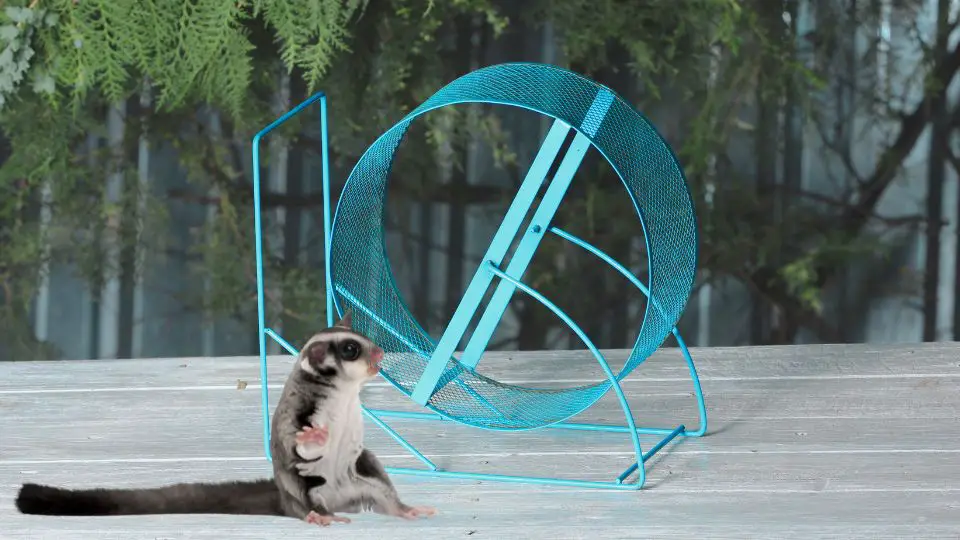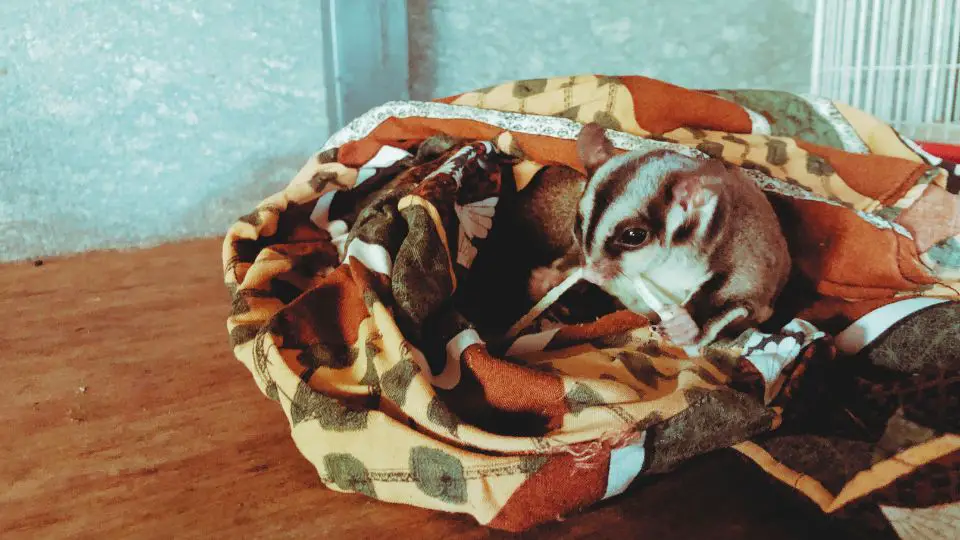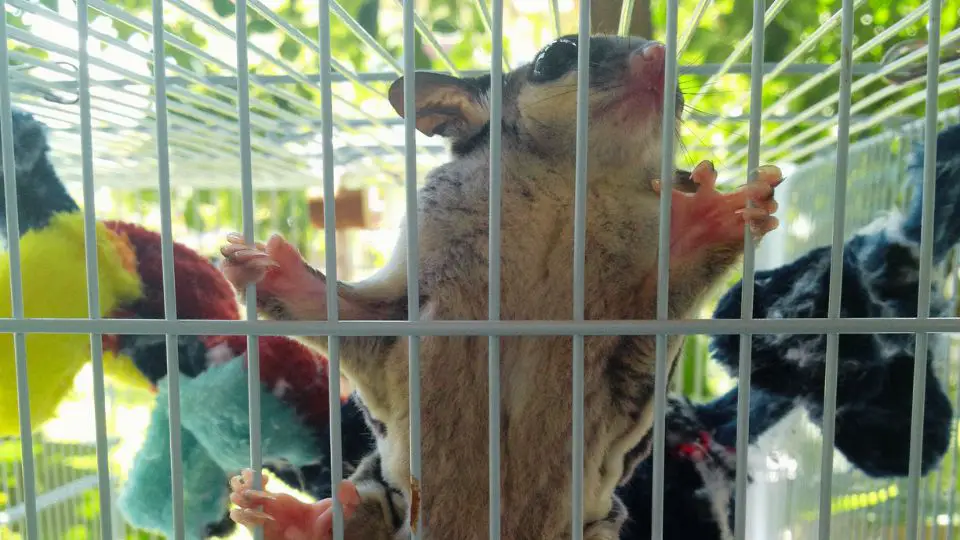Sugar gliders are rare creatures found in Australia, Papua New Guinea, and Indonesia. They resemble rodents and are quite popular in the United States as pets. There are various things to keep in mind while caring for them, one of which is hydration.
Even though these sweet little marsupials do not drink water regularly in the wild because they keep themselves hydrated by eating succulent fruits, they always need to have water at hand when living in a cage.
It is, however, normal for newborns to refuse to drink from their water bottles for the first few days. Baby sugar gliders acquire the bulk of their liquids from their fruits, so as long as they eat them every day (and you keep a tiny piece of apple for example with them in their bonding pouch), they should be ok.
Read on to hear about everything sugar glider hydration related: safe to drink water, how to avoid dehydration, how long a sugar glider can go without water and much more!
How do Sugar Gliders Drink Water
Have you ever wondered how sugar gliders drink water? These little marsupials are experts at staying hydrated, and they have some interesting methods for doing so.
Sugar gliders are nocturnal animals, meaning that they are most active at night. This means that they often have to find water in the dark. To help them do this, they have evolved some interesting adaptations.
For starters, sugar gliders have very good eyesight. This helps them to spot potential sources of water, even in the darkness. They also have a keen sense of smell, which comes in handy for finding water that might be hidden from view.
Sugar gliders have long tongues that they use to lap up water. They also have a special pouch on their cheek that they can use to store water while they’re on the go. So next time you see a sugar glider, remember that these creatures are masters of hydration!
How to avoid dehydration
Sugar gliders may dry completely and die in as little as 12 hours, especially the very young ones. Fortunately, there is a way for measuring the hydration levels of sugar gliders. All you have to do is pull their skin up at the shoulders. Everything is usually OK if the skin instantly returns to normal.
If, on the other hand, the skin remains up or descends very slowly, they are most likely dehydrated. Rehydration may be aided by a veterinarian injecting fluid under the skin.
Make sure to properly clean the “tip” of the water bottle every day to ensure that the pipe does not get stuck. If this occurs even once and a baby is unable to get water, he or she might become extremely dehydrated, therefore it’s always best to check that the pipe is working properly every day.
Dehydration in a sugar glider can be an indicator of a much deeper issue, therefore you should investigate why is this occurring. Having said that, diarrhea is usually the first outward indicator of possible dehydration.
Diarrhea in infant sugar gliders is mainly caused by one of two things: dehydration or stress because your baby(ies) is in a new environment, it’s normal for them to be a bit anxious and have some diarrhea at first. However, if this continues for more than a few days without at least a little firming up of their stools, it might be an indication that the glider is becoming dehydrated.
What type of water is it safe to drink?
It is entirely up to you the kind of water you choose. Most people recommend tap water. If you drink your own tap water, it is most likely safe for your gliders as well.
If you have your own well for drinking water and get it checked for parasites, germs, and other contaminants on a regular basis, it may be used for gliders.
Most bottled water is tap water if you read the labeling. You should not use distilled water since it is acidic after all minerals have been removed from it, which is not beneficial even for humans.
If you normally drink bottled water, it is good to use for your gliders but not required. That is your choice, and you are free to make it for your gliders as well.
How to get the sugar glider to drink water
Water is vital to all pets, and they may refuse to drink water for an extended period of time or drink very little. Here are some methods to get your sugar glider to drink water.
Using a water bottle is one method of getting your sugar glider to drink water. When the sugar glider gets thirsty, you may hang the water bottle in the cage and it will sip water. Sugar gliders do not drink a lot of water, thus you should not be concerned if the water level remains the same after a few hours.
To boost your sugar glider’s chances of keeping hydrated, add a water bowl in case he or she rejects the water bottle. Keep the water bottle and water dish in a different place within the cage.
If your sugar glider hasn’t been drinking water for a few days, you may force it to drink using a syringe. Fill a needleless syringe halfway with water, then gently hold your sugar glider and open its mouth.
Place the syringe in its mouth and pump the water into its mouth, slowly, ensuring that it consumes the majority of it. You may use the syringe approach once a day until your sugar glider learns to drink from a water bottle or bowl.

How Long Can Sugar Gliders Go Without Water?
We sometimes leave our homes for a few days but are unable to locate someone to care for our little pets. Food and water are crucial for your pet’s existence; consequently, knowing how long your pet can go without drinking water is critical.
A sugar glider might not survive for more than 12 hours without water. If you are going to leave your sugar glider alone for a few days, make sure there is sufficient water available in its cage. Sugar gliders don’t drink much water in a day, but they can’t go without it for long.
Fruits having a lot of liquid, such as mangos, and grapes, should also be left out for them. When you return, inspect your glider for symptoms of dehydration and take appropriate action.
Extreme dehydration may kill your sugar glider. If you notice your sugar glider is dehydrated, you may either give it water right away or take it to a veterinarian. Dehydration may also be induced by sickness or injury, which prevents your sugar glider from reaching the water bottle. Check to see whether the water ball is functioning, since dehydration in sugar gliders may be caused by the ball in the water bottle being stuck and preventing water from flowing.







